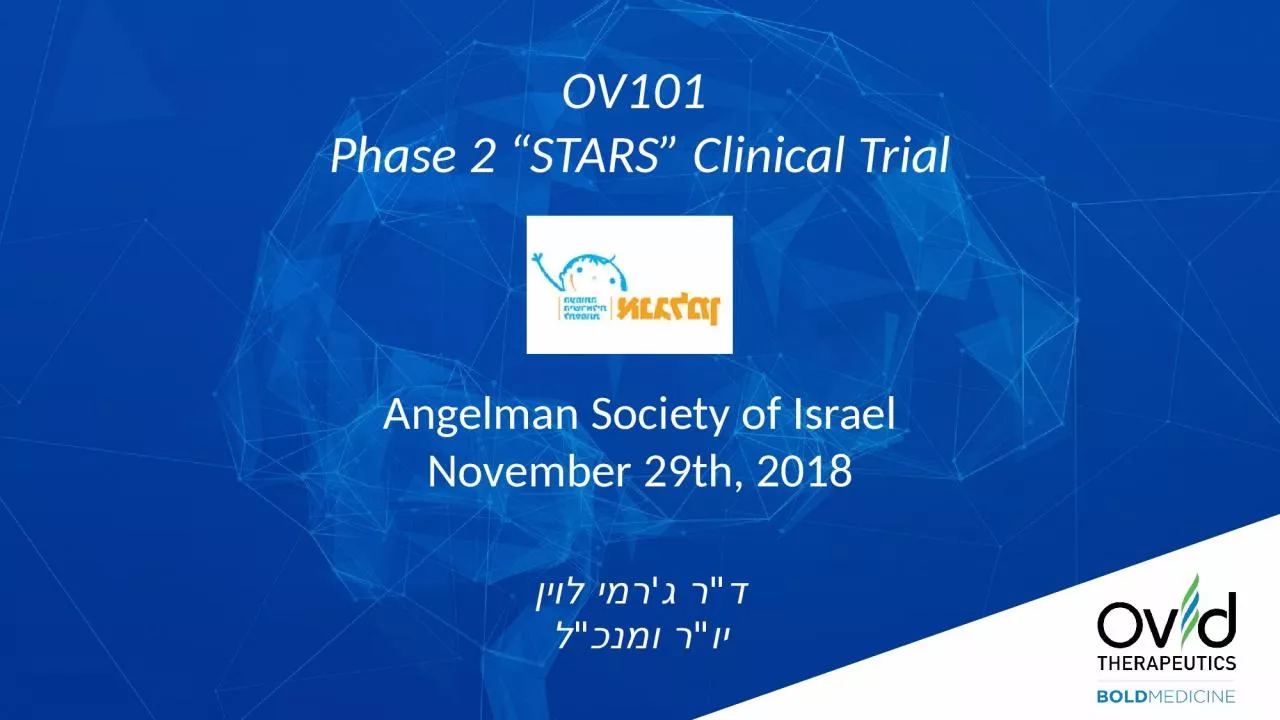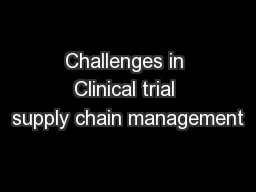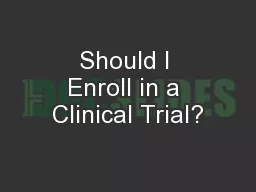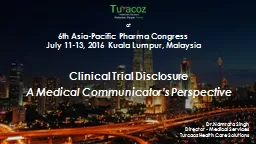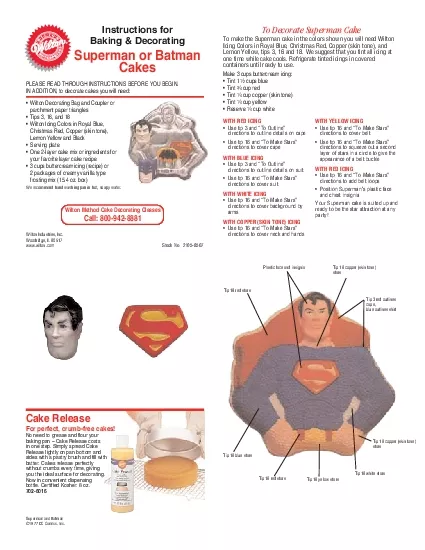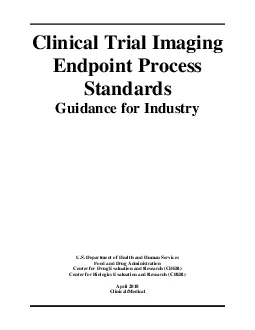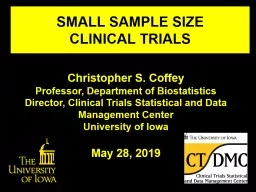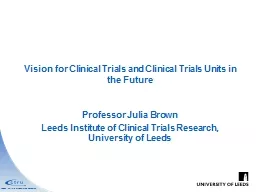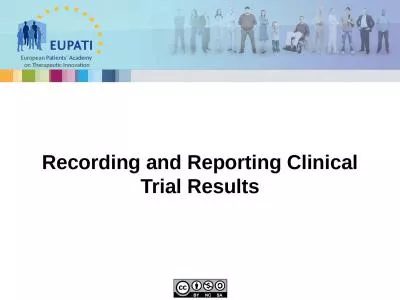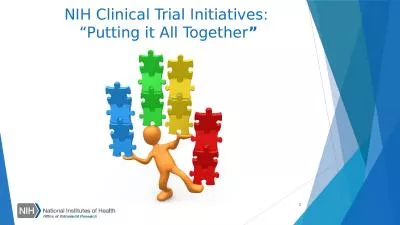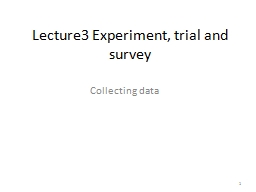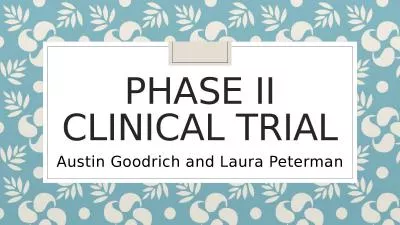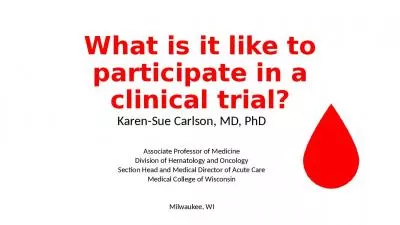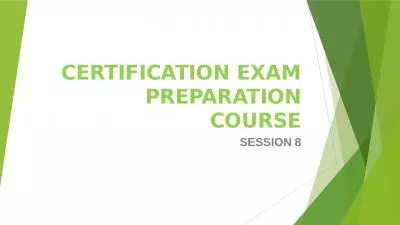PPT-OV101 Phase 2 “STARS” Clinical Trial
Author : MoonBabe | Published Date : 2022-08-04
Angelman Society of Israel November 29th 2018 דר גרמי לוין יור ומנכל ForwardLooking Statements This presentation contains forwardlooking statements
Presentation Embed Code
Download Presentation
Download Presentation The PPT/PDF document "OV101 Phase 2 “STARS” Clinical Tria..." is the property of its rightful owner. Permission is granted to download and print the materials on this website for personal, non-commercial use only, and to display it on your personal computer provided you do not modify the materials and that you retain all copyright notices contained in the materials. By downloading content from our website, you accept the terms of this agreement.
OV101 Phase 2 “STARS” Clinical Trial: Transcript
Download Rules Of Document
"OV101 Phase 2 “STARS” Clinical Trial"The content belongs to its owner. You may download and print it for personal use, without modification, and keep all copyright notices. By downloading, you agree to these terms.
Related Documents

